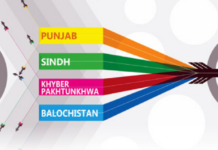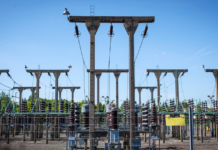ISLAMABAD:Pakistan’s government has abolished right-of-way (RoW) charges on the laying of fibre optic cables and installation of IT infrastructure, a move aimed at accelerating the country’s digital transformation.
The decision, taken on the instructions of Prime Minister Shehbaz Sharif, removes what officials described as a “major obstacle” to the expansion of broadband connectivity nationwide.
The Ministry of IT confirmed on Monday that the policy change has been implemented with immediate effect. Both the Ministry of Railways and the National Highway Authority (NHA), which previously levied right-of-way charges on telecom operators for laying fibre along their land corridors, have now eliminated the fees. “This decision will speed up fibreisation and digitalisation in Pakistan,” the ministry said, adding that implementation had begun in line with the Prime Minister’s directive issued on July 14, 2025.
Telecom and IT companies had long complained that RoW charges—fees imposed for using public land, railway tracks or highways to lay fibre optic cables—were inconsistent across regions and prohibitively high in many cases, discouraging investment.
According to industry sources, the charges not only increased deployment costs but also slowed down the government’s target of expanding high-speed internet access to underserved areas.
Federal Minister for IT and Telecommunication Shaza Fatima hailed the development as “a landmark step towards Digital Pakistan.” In a statement, she said, “Prime Minister Shehbaz Sharif has once again delivered. The removal of right-of-way charges paves the way for fibre to reach every town and village.” She thanked Communications Minister Abdul Aleem Khan and Railways Minister Hanif Abbasi for supporting the reform.
As per the industry sources, the immediate beneficiaries of the decision would be telecom operators and internet service providers, who can now accelerate fibre optic deployment without incurring extra levies. The government hopes the savings will be passed on to consumers in the form of improved coverage, higher internet speeds and more affordable packages.
The policy shift comes as Pakistan struggles to bridge a widening digital divide. Despite recent growth in mobile broadband subscriptions, fixed broadband penetration remains low, with only a fraction of households connected to high-speed fibre networks. In rural and remote areas, connectivity gaps continue to hinder education, healthcare delivery and e-commerce opportunities.
The sources further said that right-of-way charges had been one of the most contentious regulatory issues in Pakistan’s telecom sector. The problem was not unique to Pakistan—several developing countries have faced similar disputes over fibre deployment costs—but local operators had argued that in the absence of consistent national guidelines, arbitrary fees imposed by agencies like Railways and NHA created bottlenecks.
Historically, Pakistan has lagged behind regional peers in fixed broadband access. According to the Pakistan Telecommunication Authority, fibre penetration is well below regional averages, with mobile broadband networks carrying the bulk of internet traffic. By reducing barriers to fibre rollout, policymakers hope to improve service quality, reduce latency, and prepare the country for emerging technologies such as 5G and cloud computing.
Internationally, countries that have eliminated or standardised RoW charges have seen faster fibre rollout and lower consumer costs. In India, for example, reforms in 2016 helped accelerate nationwide fibre deployment. Pakistan’s decision, observers note, signals a similar shift toward enabling digital growth through regulatory support.
The government’s ambition to expand fibre to “every town and village” is central to its Digital Pakistan vision. Sources argued that improved infrastructure will support not only consumer internet access but also digital payments, e-commerce platforms, telemedicine, and e-learning, all of which are seen as engines of economic growth.
For now, the abolition of RoW charges represents a tangible step toward reducing the cost of doing business for telecom operators. While the long-term impact will depend on broader reforms and sustained investment, the government’s move addresses a long-standing industry demand and removes a significant hurdle in the path of digital infrastructure development.
As Pakistan eyes deeper integration into the global digital economy, policymakers and industry players alike will be watching closely to see if the momentum created by this decision translates into faster connectivity rollouts and improved digital services for millions of citizens.























